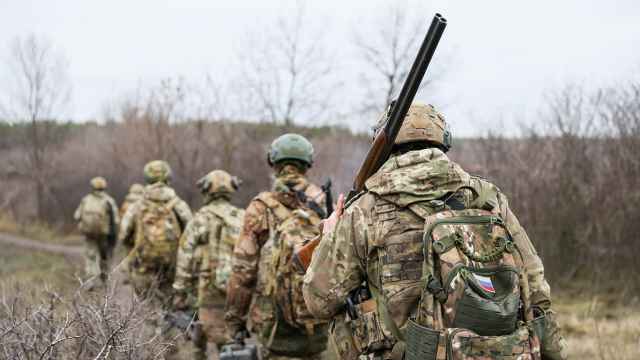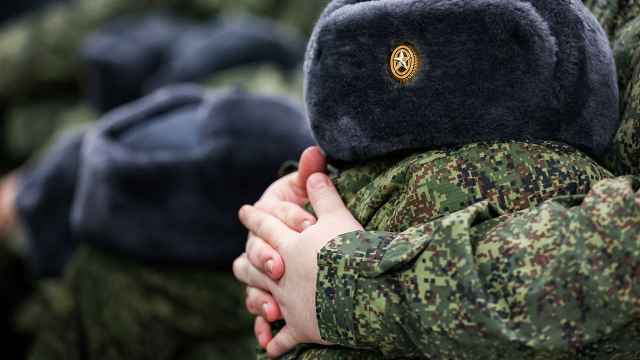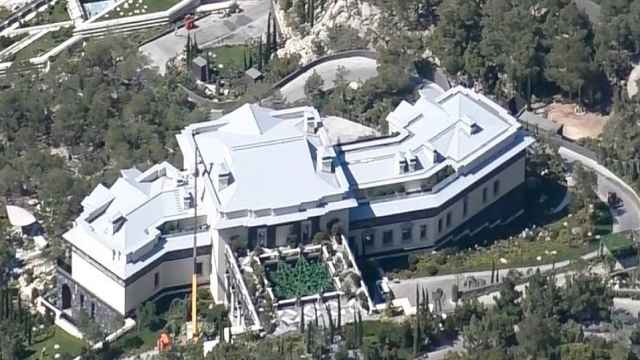CAPE CANAVERAL, Florida — Astronauts can become as weak as 80-year-olds after six months at the international space station, according to a new study that raises serious health concerns as Russia and the United States contemplate prolonged trips to Mars.
Marquette University biologist Robert Fitts, who led the study, stresses that the accelerated space aging is temporary: Astronauts' muscles recover after a few months back on Earth.
But what if a crew needed to make an emergency landing here on the home planet and rush from a burning spacecraft? What if after arriving at Mars, an urgent spacewalk was needed for repairs? Would the Mars men and women even be able to muster the strength for routine work?
"I'd be concerned," Fitts said.
Astronauts can avoid becoming weaklings, however, with more research and the right equipment for hitting the space gym, Fitts said. "I really think this is all preventable," he said.
Fitts bases his findings on calf muscle biopsies that his team collected from nine U.S. and Russian space station residents from 2002 to 2005. It is the first muscle study of long-flying astronauts that gets down to the cellular level, with actual biopsies conducted.
Each astronaut spent six months aboard the orbiting lab, and submitted to a biopsy before rocketing away and immediately upon returning to Earth.
The researchers discovered that the astronauts had lost more than 40 percent of the power in the slow-twitch fibers of their calf muscles. Those are the muscles so crucial for balance and posture, and seem to take more of a space-beating than other parts of the body.
Fitts said the muscle decline in the 40-something space station astronauts was equivalent to that of a person twice as old.
It did not matter how muscle-bound someone was going into the mission. Fitts said the strongest weightlifting astronauts suffered the greatest muscle atrophy in orbit.
This considerable deterioration of the calf muscles occurred even though the astronauts devoted one to two hours a day to exercise. NASA has long realized the importance of weightless workouts, and the space station is equipped with treadmills, stationary cycles and resistive-exercise machines for leg squats and calf raises.
NASA expects a new resistive exercise machine flown up last year to improve upon the old one. Tests are planned to see whether that bears out. Astronauts complained that using the old model was like lifting a barbell without weights.
As it is now, astronauts returning from six-month space station missions must undergo physical therapy and, because of balance issues, cannot drive for two to four weeks. An expedition to Mars would last a minimum of three years.
Besides better exercise routines and equipment, astronauts also need to eat more, Fitts said.
Studies on Earth show that subjects confined to bed as a way of simulating weightlessness need to consume an adequate amount of calories to benefit from exercise. And they need to have their meals soon after workouts, he said.
"Every one of the crew members studied on this flight … they didn't eat enough," Fitts said.
The same thing happened on Russia's old Mir space station: Caloric intake did not meet caloric demand, he said. What's more, food needs to be eaten shortly following exercise, in order to build muscle mass. Some astronauts, indeed, return to Earth thinner.
Astronauts' appetites apparently are poor in orbit, in part because of the often taxing workload, Fitts said. During the past few weeks, for example, the space station's six-person crew was preoccupied with a broken ammonia coolant pump that had to be replaced in a series of spacewalks.
"They have a lot of dietitians who say, 'This is the perfect diet.' Well, if you eat it, it's probably the perfect diet," he said with a chuckle.
Gregory Adams, a physiologist at the University of California at Irvine who conducts research for NASA's National Space Biomedical Research Institute, said the calf muscles are particularly vulnerable and difficult to train in weightlessness — in other words, "the worst-case scenario."
"So I am a little bit more cautious in extrapolating that to all the rest of the muscles of the body," Adams said.
And every astronaut is different, he said. Because of genetics, some individuals seem to experience more muscle atrophy in space no matter how much or how well they exercise.
The NASA-funded work by Fitts and his team has been published online by The Journal of Physiology, and it will be included in the September issue.
A Message from The Moscow Times:
Dear readers,
We are facing unprecedented challenges. Russia's Prosecutor General's Office has designated The Moscow Times as an "undesirable" organization, criminalizing our work and putting our staff at risk of prosecution. This follows our earlier unjust labeling as a "foreign agent."
These actions are direct attempts to silence independent journalism in Russia. The authorities claim our work "discredits the decisions of the Russian leadership." We see things differently: we strive to provide accurate, unbiased reporting on Russia.
We, the journalists of The Moscow Times, refuse to be silenced. But to continue our work, we need your help.
Your support, no matter how small, makes a world of difference. If you can, please support us monthly starting from just $2. It's quick to set up, and every contribution makes a significant impact.
By supporting The Moscow Times, you're defending open, independent journalism in the face of repression. Thank you for standing with us.
Remind me later.





